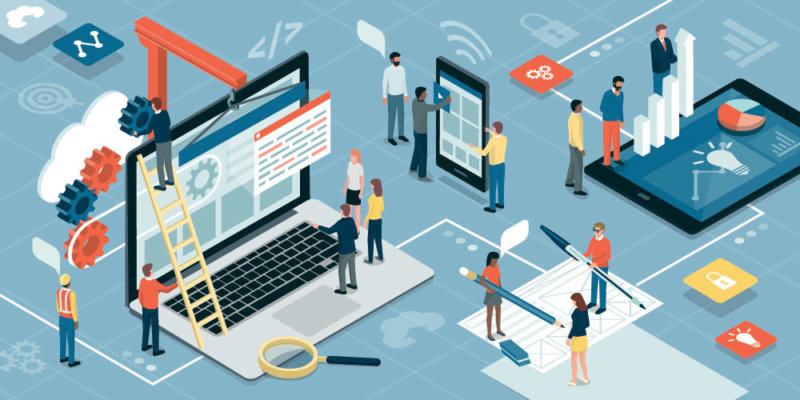
If you’ve worked in management for some time, you’ve heard discussions around Lean methodology. It’s a popular business philosophy known for reducing waste and improving efficiency. But aside from being a popular buzzword, what is Lean? And more importantly, can it benefit your organization?
Short answer: Yes. Lean Methodology can be used to improve the way your teams manage projects, collaborates, and deliver products. But Lean is more than a simple project management solution. Lean is a business philosophy that governs concepts like:
- How employees and managers interact
- The delegation and completion of tasks
- How to handle success and failure
As such, organizations adopting Lean Methodology must uphold Lean’s principles at all times. Otherwise, their initiative will fall short. Before we discuss those principles, let’s take a brief look at Lean’s history to better understand what it is.
WHAT IS LEAN?
Lean’s origins go back to the Toyota Production System—the same system that gave the world Kanban. Its original purpose was to improve manufacturing, which was done by boosting productivity and minimizing waste. Like Kanban, Lean eventually became popular outside manufacturing and has been adopted by other industries around the world.
What is Lean Methodology, anyway?
Simply put, Lean operates on two important tenets:
- Always striving for improvement
- Maintaining respect for people. These two pillars make up the core values of the Lean Methodology. For organizations to succeed with the Lean approach, they must ensure their business model prioritizes these tenet.
STRIVING FOR IMPROVEMENT
While Lean is most popular for its ability to reduce waste, that’s actually not its primary goal. Its real goal is to create, not eliminate. Eliminating waste is simply a byproduct of Lean’s focus on continuous improvement. But how does this work?
When organizations push for continuous improvement, they’re constantly exploring ways to enhance the way:
- Projects are managed
- Tasks are delegated
- Teams collaborate
- Customer service is delivered
Among a number of other things. Continuous improvement is just that—exploring ways to improve any and every aspect of your business so you can add more value to your product.
However, the way Lean Methodology defines value is significantly different than how traditional business models define it. In Lean, both failure and success can be seen as adding value. This is due to Lean’s swift nature, which encourages managers and workers to quickly move through tasks. Because the quicker a process is completed, the sooner feedback can be received on that task.
If the task was completed successfully, then the feedback will be positive. If the task had mistakes, workers receive constructive feedback which can be used to prevent subsequent mistakes from occurring. In other words, failure adds value because it’s seen as a learning experience that improves the way future tasks are completed. This concept is called business agility, and it’s an integral part of the Lean philosophy.
RESPECTING PEOPLE
The other core tenet of Lean is to always have respect for people. It’s important for managers and stakeholders to understand that everyone in an organization has something they can contribute, not just the top-ranking officials.
Followers of the Lean Methodology believe that some of the best ideas come from the people on the ground. It’s the employees who have the experience working with the product, so they know what does and doesn’t work. If you’re creating a Lean workspace, it’s important that you also give workers a voice when planning and implementing projects. Let them express their opinions and solutions and give them the opportunity to share any ideas of their own.
HOW LEAN CAN EMPOWER YOUR ORGANIZATION
Now that we’ve covered the basics of Lean, one question remains to be answered: How does Lean benefit you?
As we previously mentioned, Lean isn’t just about project management—it’s an entire shift in your business philosophy. It’s used to help all members of your organization make smarter decisions when navigating the workspace. Everything from time management to how money is allocated can be governed by Lean’s core principle—does your decision add value?
Moreover, Lean gives organizations a framework to follow when reaching their goals. You might not always know the direction your company needs to go, but with Lean, you’ll always know why you’re moving.
In fact, Lean can transform even the most dysfunctional teams into top performers by giving them a sense of direction. It lets workers know that, regardless of whatever auxiliary objectives your team has, the goal of your project is always to strive for improvement.
THE TAKEAWAY ON LEAN METHODOLOGY
Adopting the Lean approach helps organizations adopt a testing mindset, where “failures” are seen as tests rather than setbacks. As part of continuous improvement, the testing mindset requires projects to pass a rigorous series of inspections before being completed. This, in turn, ensures that every product is delivered with the same level of quality. Want to dig deeper into Lean Methodology and explore how you can use it to empower your organization? Read our eBook titled Getting Started with Lean to learn more.

![A Global Collaborative Work Management Blueprint [Video]](https://blog.planview.com/wp-content/uploads/2019/07/A-Global-Collaborative-Work-management-blueprint.png)


